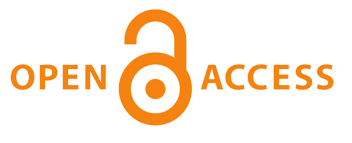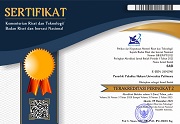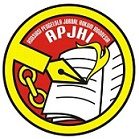Implications of Waqf Land Management from the Perspectives of Positive Law and Islamic Law: A Case Study of Waqf Land in North Sumatra
 ), M. Yasir Nasution(2), Pagar Pagar(3)
), M. Yasir Nasution(2), Pagar Pagar(3)
(1) Faculty of Syariah and Law North Sumatra State Islamic University, Medan, Indonesia
(2) Office of the Ministry of Religion, Binjai, Indonesia
(3) Office of the Ministry of Religion, Binjai, Indonesia
 Corresponding Author
Corresponding Author
Abstract
Introduction: Waqf is a sign of giving whose implementation is carried out by retaining (ownership) of origin (tahbisul ashli), then making the benefits generally accepted.
Purposes of the Research: To find out about the management of waqf property in North Sumatra, especially the waqf land of Tengku Darwisyah in Serdang Bedagai according to positive law and Islamic law.
Methods of the Research: This research is a qualitative study with a social history approach to Islamic law.
Results of the Research: The management of the waqf land of Tengku Darwisyah is still far from expectations because it has not been managed perfectly and only has a traditional and consumptive nature, and there has been no good management. In addition, the trustee of the waqf of Tengku Darwisyah is passive and even fatalistic by allowing tenants to build permanent structures such as places of worship, sports halls (GOR), farms, and trading companies, which should be productive, and this policy is not based on any contract or agreement.Keywords
DOI
10.47268/sasi.v29i2.1365
Published
2023-04-19
How To Cite
@article{SASI1365,
author = {Abd. Harahap and M. Nasution and Pagar Pagar},
title = {Implications of Waqf Land Management from the Perspectives of Positive Law and Islamic Law: A Case Study of Waqf Land in North Sumatra},
journal = {SASI},
volume = {29},
number = {2},
year = {2023},
keywords = {Management of Land Waqf; Positive Law; Islamic Law; Tengku Darwis},
abstract = {Introduction: Waqf is a sign of giving whose implementation is carried out by retaining (ownership) of origin (tahbisul ashli), then making the benefits generally accepted. Purposes of the Research: To find out about the management of waqf property in North Sumatra, especially the waqf land of Tengku Darwisyah in Serdang Bedagai according to positive law and Islamic law.Methods of the Research: This research is a qualitative study with a social history approach to Islamic law.Results of the Research: The management of the waqf land of Tengku Darwisyah is still far from expectations because it has not been managed perfectly and only has a traditional and consumptive nature, and there has been no good management. In addition, the trustee of the waqf of Tengku Darwisyah is passive and even fatalistic by allowing tenants to build permanent structures such as places of worship, sports halls (GOR), farms, and trading companies, which should be productive, and this policy is not based on any contract or agreement.},
issn = {2614-2961}, pages = {342--353} doi = {10.47268/sasi.v29i2.1365},
url = {https://fhukum.unpatti.ac.id/jurnal/sasi/article/view/1365}
}
Journal Article
Abdullah, Agung. “Nadzir Dalam Perspektif Kelembagaan Wakaf Di Indonesia.” Jurnal Ilmiah Ekonomi Islam 6, no. 3 (2020): 403–8.
Afroni, Mochamad. “Pendekatan Sejarah Dalam Studi Islam.” Jurnal Madaniyah 9, no. 2 (2019): 268–76.
Alfiah, Esti, Mesi Herawati, and Riri Novitasari. “Manajemen POAC Wakaf Di Indonesia.” ZISWAF: JURNAL ZAKAT DAN WAKAF 7, no. 2 (October 19, 2020): 117–31. https://doi.org/10.21043/ziswaf.v7i2.8065.
Cahyani, Putri, and Murtiadi Awaluddin. “Pengelolaan Wakaf Dalam Meningkatkan Kesejahteraan Umat (Studi Pada LAZ Aksi Cepat Tanggap Sulsel).” AT TAWAZUN: Jurnal Ekonomi Islam 1, no. 3 (2021): 128–44.
Choirunnisak. “Konsep Pengelolaan Wakaf Uang Di Indonesia.” Ekonomica Sharia: Jurnal Pemikiran Dan Pengembangan Ekonomi Syariah 7, no. 1 (2021): 67–82.
Dahlan, Rahmat. “Analisis Kelembagaan Badan Wakaf Indonesia.” Esensi: Jurnal Bisnis Dan Manajemen 6, no. 1 (2016): 113–24.
Dikuraisyin, Basar. “Manajemen Aset Wakaf Berbasis Kearifan Lokal Dengan Pendekatan Sosio-Ekonomi Di Lembaga Wakaf Sabilillah Malang.” ZISWAF: Jurnal Zakat Dan Wakaf 7, no. 2 (October 19, 2020): 100–116. https://doi.org/10.21043/ziswaf.v7i2.7903.
Faathir, Ahmad, Komariah Komariah, and Idaul Hasanah. “Analisis Yuridis Sosiologis Perjanjian Wakaf Uang Pada Lembaga Keuangan Syari’ah Penerima Wakaf Uang (LKS-PWU) Di Kota Malang.” Indonesia Law Reform Journal 2, no. 1 (April 1, 2022): 90–106. https://doi.org/10.22219/ilrej.v2i1.18574.
Farisi, Salman Al. “Implementasi Wakaf Berjangka Menurut Undang – Undang Nomor 41 Tahun 2004 Dan Peraturan Pemerintah No. 42 Tahun 2006.” Jurnal PENA 36 (2022): 8–15.
Labetubun, Muchtar Anshary Hamid. “The Implications of Islamic Law Related to the Implementation of CashWaqf /Money.” Jurnal Akta 9, no. 2 (2022): 205–21. https://doi.org/10.30659/akta.v9i2.21148.
Mu’is, Ahmad, and Binti Nur Hamidah. “Penerapan Wakaf Uang Secara Profesional Menurut Hukum Islam (Application of Cash Waqf in Good Governance).” Qawanin: Jurnal of Economic Syaria Law 4, no. 1 (2020): 121–37.
Nurbayani, Ani. “Strategi Pemberdayaan Wakaf Produktif Dalam Upaya Memakmurkan Umat.” Tadbir: Jurnal Manajemen Dakwah 5, no. 2 (2020): 176–87.
Patria, Aditya Putra. “Tukar Menukar Harta Benda Wakaf Dalam Pengadaan Tanah Bagi Pembangunan Untuk Kepantingan Umum.” NoLaJ 1, no. 1 (2022): 63–75.
Putri, Rida Destiani, Asep Ramdan Hidayat, and Ifa Hanifia Senjiati. “Analisis Peraturan Pemerintah No 42 Tahun 2006 Terhadap Pelaksanaan Wakaf Uang Di Bukopin Syariah.” Prosiding Hukum Ekonomi Syariah 4, no. 2 (2018): 1063–67. https://doi.org/http://dx.doi.org/10.29313/syariah.v0i0.11215.
Said, M. Yusuf. “Perubahan Fungsi Wakaf Menurut Kompilasi Hukum Islam.” Al-Irsyad: Jurnal Pendidikan Dan Konseling 6, no. 2 (2016): 60–70.
Saprida, Fitri Raya, and Zuul Fitriani Umari. “Manajemen Wakaf Dalam Perspektif Hukum Islam Dan Undang-Undang No. 41 Tahun 2004.” Ekonomica Sharia: Jurnal Pemikiran Dan Pengembangan Ekonomi Syariah 8, no. 1 (2022): 59–74.
Subhan, Moh. “Dasar-Dasar Pemikiran Ekonomi Islam.” Al Iqtishod: Jurnal Pemikiran Dan Penelitian Ekonomi Islam 8, no. 2 (December 28, 2020): 81–90. https://doi.org/10.37812/aliqtishod.v8i2.159.
Sulistiani, Siska Lis. “Penghimpunan Dan Pengelolaan Wakaf Uang Melalui Perbankan Syariah Di Indonesia.” Jurnal Wawasan Yuridika 5, no. 2 (2021): 249–66. https://doi.org/http://dx.doi.org/10.25072/jwy.v5i2.343.
Suryadi, Nanda, and Arie Yusnelly. “Pengelolaan Wakaf Uang Di Indonesia.” SYARIKAT: Jurnal Rumpun Ekonomi Syariah 2, no. 1 (2019): 27–36. https://doi.org/http://dx.doi.org/10.32493/frkm.v4i1.6928.
Suryamah, Aam, and Helza Nova Lita. “Pengaturan Pengelolaan Dana Wakaf Sebagai Modal Untuk Kegiatan Bisnis Oleh Yayasan.” Jurnal Bina Mulia Hukum 5, no. 2 (March 26, 2021): 240–58. https://doi.org/10.23920/jbmh.v5i2.269.
Zainur, and Andri Soemitra. “Studi Literatur Model Penerapan Wakaf Pada Organisasi Pengelola Wakaf Di Indonesia.” Jurnal Ilmiah Ekonomi Islam 8, no. 1 (2022): 483–90.
Book
Abdurahman, Dudung. Metodologi Penelitian Sejarah Islam. Yogyakarta: Penerbit Ombak, 2011.
Arfa, Faisar Ananda, and Watni Marpuang. Metodologi Penelitian Hukum Islam. Jakarta: Prenada Media, 2016.
Badan Wakaf Indonesia. Himpunan Peraturan Perundang-Undangan Tentang Wakaf. Jakarta: Badan Wakaf Indonesia (BWI), 2018.
Tim Penyusun Direktorat Pemberdayan Wakaf, Dirjen Bimas Islam Kementrian Agama RI. Buku Pedoman Teknis Kerjasama Pengembangan Wakaf. Jakarta: Direktorat Pemberdayan Wakaf Dirjen Bimas Islam Kementrian Agama RI, 2012.
———. Proses Lahirnya Undang-Undang No 41 Tahun 2004 Tentang Wakaf. Jakarta: Direktorat Pemberdayan Wakaf Dirjen Bimas Islam Kementrian Agama RI, 2015.
Thesis, Web Page, and Others
Harahap, Abd. Rahman. “Pengelolaan Tanah Wakaf Tengku Darwisyah Di Kecamatan Perbaungan Menurut Hukum Positif Dan Hukum Islam.” In Doctoral Thesis. Medan: Pascasajana Universitas Islam Negeri Sumatera Utara, 2021.
| Dublin Core | PKP Metadata Items | Metadata for this Document | |
| 1. | Title | Title of document | Implications of Waqf Land Management from the Perspectives of Positive Law and Islamic Law: A Case Study of Waqf Land in North Sumatra |
| 2. | Creator | Author's name, affiliation, country | Abd. Rahman Harahap; Faculty of Syariah and Law North Sumatra State Islamic University, Medan; Indonesia |
| 2. | Creator | Author's name, affiliation, country | M. Yasir Nasution; Office of the Ministry of Religion, Binjai; Indonesia |
| 2. | Creator | Author's name, affiliation, country | Pagar Pagar; Office of the Ministry of Religion, Binjai; Indonesia |
| 3. | Subject | Discipline(s) | |
| 3. | Subject | Keyword(s) | Management of Land Waqf; Positive Law; Islamic Law; Tengku Darwis |
| 4. | Description | Abstract | Introduction: Waqf is a sign of giving whose implementation is carried out by retaining (ownership) of origin (tahbisul ashli), then making the benefits generally accepted. Purposes of the Research: To find out about the management of waqf property in North Sumatra, especially the waqf land of Tengku Darwisyah in Serdang Bedagai according to positive law and Islamic law.Methods of the Research: This research is a qualitative study with a social history approach to Islamic law.Results of the Research: The management of the waqf land of Tengku Darwisyah is still far from expectations because it has not been managed perfectly and only has a traditional and consumptive nature, and there has been no good management. In addition, the trustee of the waqf of Tengku Darwisyah is passive and even fatalistic by allowing tenants to build permanent structures such as places of worship, sports halls (GOR), farms, and trading companies, which should be productive, and this policy is not based on any contract or agreement. |
| 5. | Publisher | Organizing agency, location | Faculty of Law, Universitas Pattimura |
| 6. | Contributor | Sponsor(s) | Faculty of Syariah and Law North Sumatra State Islamic University; Office of the Ministry of Religion, Binjai |
| 7. | Date | (YYYY-MM-DD) | 2023-04-19 |
| 8. | Type | Status & genre | Peer-reviewed Article |
| 8. | Type | Type | |
| 9. | Format | File format | |
| 10. | Identifier | Uniform Resource Identifier | https://fhukum.unpatti.ac.id/jurnal/sasi/article/view/1365 |
| 10. | Identifier | Digital Object Identifier | 10.47268/sasi.v29i2.1365 |
| 11. | Source | Title; vol., no. (year) | SASI; Volume 29 Issue 2, June 2023 |
| 12. | Language | English=en | en |
| 13. | Relation | Supp. Files | |
| 14. | Coverage | Geo-spatial location, chronological period, research sample (gender, age, etc.) | |
| 15. | Rights | Copyright and permissions | Copyright: Authors who publish their manuscripts in this Journal agree to the following conditions: 1. The copyright in each article belongs to the author, as well as the right to patent. 2. Authors can enter into separate, additional contractual arrangements for the non-exclusive distribution of the journal's published version of the work (e.g., post it to an institutional repository or publish it in a book), with an acknowledgment of its initial publication in this journal. 3. Authors are permitted and encouraged to post their work online (e.g., in institutional repositories or on their website) before and during the submission process, as it can lead to productive exchanges, as well as earlier and greater citation of published work. 4. Authors have the right to self-archiving of the article (Author Self-Archiving Policy)
License: The SASI Journal is disseminated based on the Creative Commons Attribution-NonCommercial 4.0 International license terms. This license allows anyone to copy and redistribute this material in any form or format, compose, modify, and make derivatives of this material for any purpose. You cannot use this material for commercial purposes. You must specify an appropriate name, include a link to the license, and certify that any changes have been made. You can do this in a way that is appropriate but does not imply that the licensor supports you or your use.
|
Copyright (c) 2023 Abd. Rahman Harahap, M. Yasir Nasution, Pagar Pagar

This work is licensed under a Creative Commons Attribution-NonCommercial 4.0 International License.

 : 2189 times
: 2189 times Download : 1008 times
Download : 1008 times
















